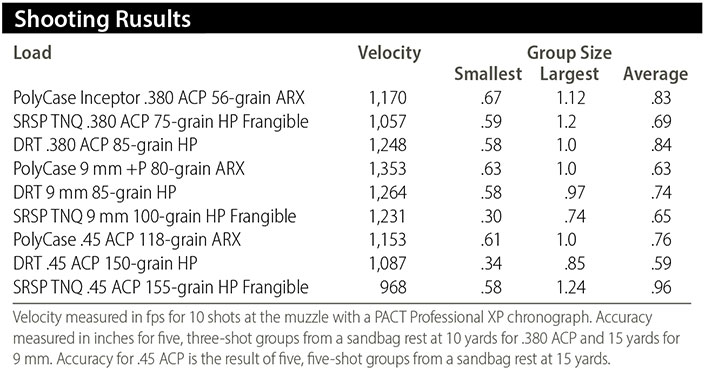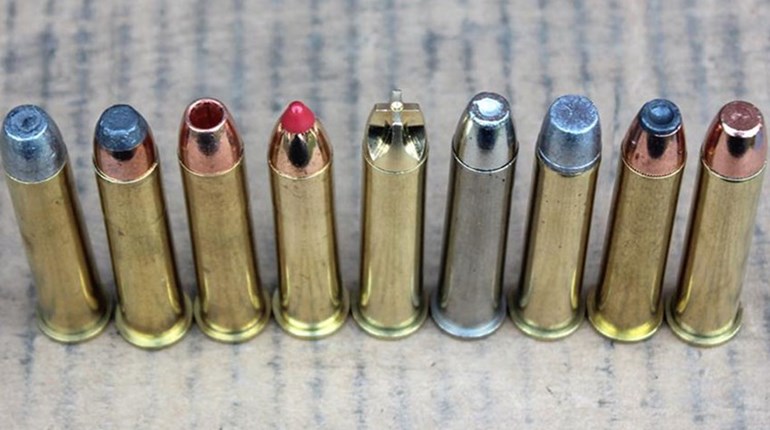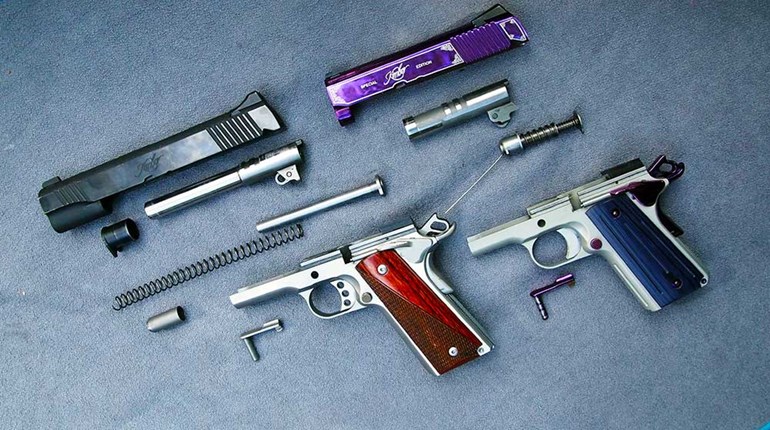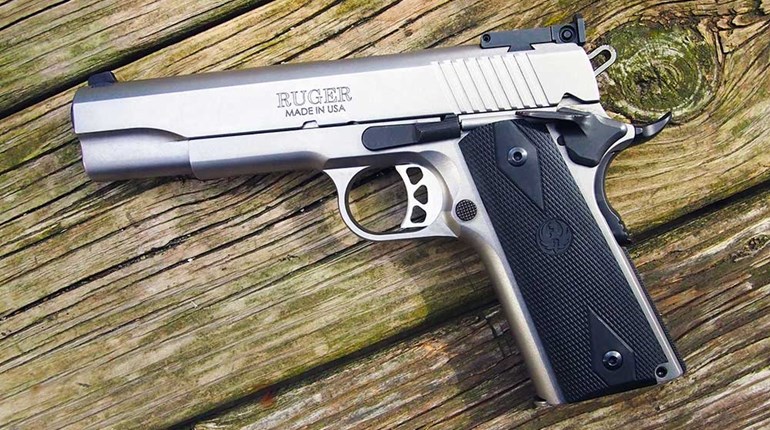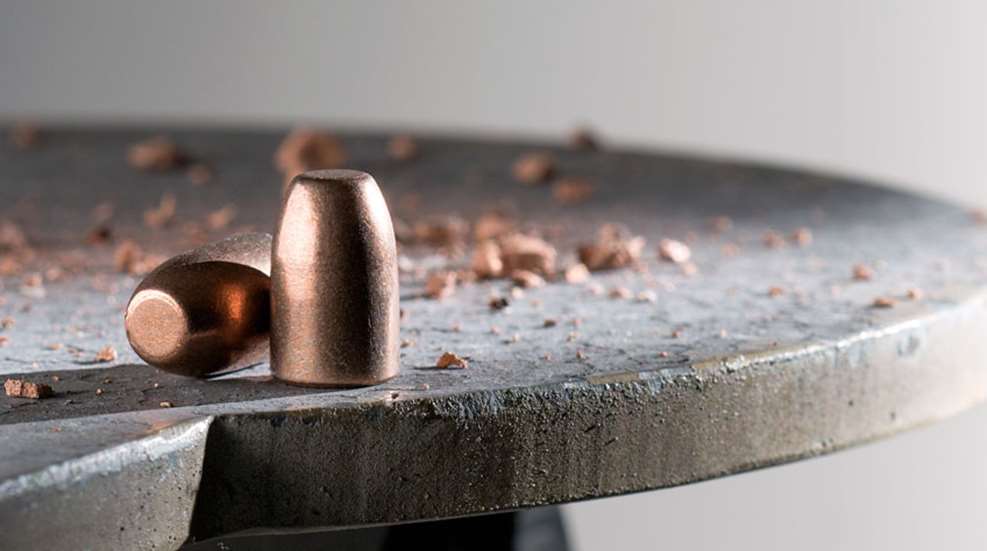
Bullets predated firearms by centuries. Two millennia ago, sling bullets cast from clay, stone and lead were used in battle, and in the second century A.D. the Romans took it further with whistling bullets. Those were made by casting 1-ounce lead balls and drilling 5-millimeter holes into their centers. The resultant bullets whistled to intimidate and traveled at speeds of 100 meters per second. Words such as dexai—“take this” or “catch”—were etched into the projectiles. Today, bullets have evolved significantly with one particular type taking the lead for innovation and versatility: frangibles.
Frangible bullets aren’t new; in fact, they were originally created for mid-20th century shooting galleries. The 1967 edition of the “Shooter’s Bible” lists Remington’s Spatter-Less and Winchester’s SpatterProof, both labeled as gallery cartridges. But just as the science behind hollow-points has advanced, so has the manufacturing process behind frangibles.
The purpose of frangible bullets is simple: to reduce or eliminate ricochets and backsplash. Sixty years ago, the focus was injury-free fun at shooting galleries; today it’s about CQB (Close Quarter Battle) training and self-defense. Six decades ago, gallery rounds were made with iron powder. Those projectiles penetrated more deeply than expected and were also magnetic. There’s no comparison between early gallery rounds and the frangibles available today.
Modern-day frangible bullets are made using powder metallurgy: pressing and sintering finely powdered metals into objects. Copper is used predominantly because it’s extremely malleable and ductile—it readily deforms under both tensile (pulling) and compressive (pushing) stress. Metals such as tin are used as binding agents, and the resulting compressed-copper powder bullet disintegrates into miniscule fragments when it strikes an object harder than itself. This frangibility makes it ideal for steel plate shooting, CQB training and close-range shooting, but that’s not all. Today’s frangibles are ideal for self-defense and hunting. Not only are they capable of dropping an attacker and delivering a clean kill on game, but they disintegrate, drastically reducing the risk of over-penetration and potentially wounding innocent bystanders.

There are three stand-out companies in the frangible market: Snake River Shooting Products (SRSP), Dynamic Research Technologies (DRT) and PolyCase. Each offers a different type of frangible, and each has singular advantages. SRSP’s Team Never Quit HP Frangibles are not jacketed, DRT’s HPFB Terminal Shock line is comprised of jacketed frangibles and PolyCase utilizes polymer in its projectiles, which are uniquely fluted.
Snake River Shooting Products Team Never Quit HP Frangible
Snake River Shooting Products (SRSP) was founded in 2012 by USAF veteran Casey Betzold. In 2015, the company teamed with former Navy SEAL Marcus Luttrell for the Team Never Quit (TNQ) line, launching it with frangibles. Luttrell is familiar with backsplash and ricochets, having spent years training with ammunition bouncing back at him. He and Betzold feel the frangible hollow-points that make up the heart of the TNQ line are ideal for everything from training to self-defense to hunting. After spending countless hours training and hunting with the ammunition myself, I agree.
TNQ bullets are manufactured by Sinterfire, the company responsible for supplying 90 percent of the industry’s frangible projectiles. The copper-and-tin bullets are lead-free and the primers are non-toxic, making them both clean and green. The bullets have no jacketing, plating, or surface treatments and are designed for improved accuracy and greater velocity. Benefits to the gun itself include reduced chamber pressure, decreased bore wear and less fouling overall.
Regarding TNQ’s unjacketed bullets, Betzold referenced the fact that shooting jacketed HPs can result in ricochet as the jacket separates from the bullet. He personally knows people who are “carrying around pieces of copper jacket in their bodies.” Betzold explained “the lack of a jacket allows our bullets to be fired within 6 inches of a steel plate without risking injury due to ricochet. When utilized in our HP projectiles, it greatly reduces the chance of collateral damage downrange due to ricochet or chunks of shrapnel striking an innocent from a bounced round.”
Dynamic Research Technologies HPFB Terminal Shock
Dynamic Research Technologies (DRT) is a relative newcomer, but has made an impression in record time. It’s a family-owned business based in Missouri and lists environmental awareness as the top reason the company manufacture lead-free frangibles. According to DRT President Dustin Worrell, it strives to produce something different, lead-free and lethal. Unlike SRSP TNQ, which made its first mark in self-defense, DRT started with hunting. In just a few years the company has built a reputation for reliable frangible hunting ammunition unheard of not that long ago.
The company’s website states its rifle bullet jackets are “the best in the world.” When asked why DRT uses jacketed frangible bullets, Worrell mentioned keeping the bullets intact while traveling through certain barriers. He added, “the jacket allows [them] to penetrate more deeply than traditional frangible bullets.” Worrell made it clear DRT isn’t just about hunting; they’re about reliable stopping power in self-defense situations, too.
“Nine millimeter is coming back into play for law enforcement, which creates real problems because 9 mm is terribly over-penetrative. That’s a liability for the department when it goes through an assailant and then has a chance to hit someone else,” Worrell stated. The DRT president doesn’t mince words: “The other issue? Nine millimeter don’t necessarily stop anyone. They require more rounds to accomplish what a .45 ACP could accomplish with one or two shots. DRT solves that problem by making every caliber more effective. Are there limitations? Of course, but in a self-defense situation, they work great,” he explained.
Regarding potential backsplash from jackets, Worrell admitted it is a possibility at “super-close range.” His suggested range shooting DRT frangibles is 10 feet and beyond. DRT also promises superior accuracy. That’s the result of precision. The neck size of each round is within .0005 inch and powder charge tolerance is right at three-tenths of a grain. Needless to say, they take pride in quality control.
PolyCase Ammunition
PolyCase was founded by former U.S. Army Airborne Ranger Paul Lemke in 2012. The company spent years crafting its lightweight ammunition and decided to use the precision injection-molding process. The company’s goal? To create innovative ammunition unlike anything the industry had seen. SRSP TNQ projectiles are a sintered copper-tin combination, DRT’s have a compressed powdered-metal core that is neither bonded nor sintered. And PolyCase? Its bullets are manufactured with a proprietary copper-polymer compound, with polymer used as a binding agent. This undoubtedly lends features to the bullets due to its toughness and viscoelasticity.
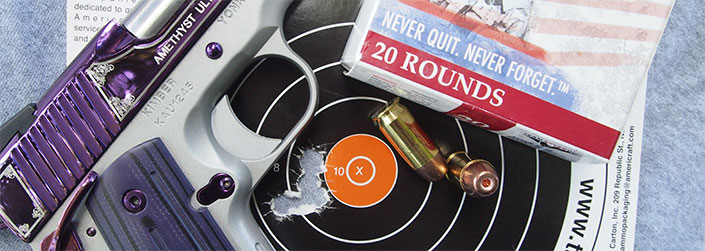
According to Lemke, “PolyCase Ammunition has the organic capability to conduct all phases of new product development.” He added, “Combining [these] capabilities and know-how with the inherent advantages of injection molding has resulted in ammunition that is truly revolutionary in a 140-year-old industry that has seen relatively little innovation in materials, design and manufacturing processes.”
Testing and Evaluation
Thousands of frangibles went downrange during testing, which involved everything from chronographing to shots on paper targets to steel-plate shooting, but also included hunting. What better way to deduce the efficacy of a round than by taking game?
On separate hunts, I took a blackbuck doe with .308 Win. SRSP TNQ while another outdoor writer, Brian McCombie, ably dropped a feral hog using .223 Rem. DRT. In both cases the frangible bullet delivered clean kills with devastating damage to the quarry’s hearts. The animals dropped where they stood. These hunts and others led to the discovery of another desirable frangible characteristic: absence of exit wounds, which drastically reduces risk of unintentional injuries due to over-penetration in a defensive scenario (although this is not generally ideal for hunting).
Of course, steel-plate shooting is considered the ultimate use for frangibles. With this in mind, I loaded magazines for my Kimber Custom II Two-Tone with .45 ACP offerings from each company and advanced while firing on a Birchwood Casey Donkey Gong half-inch-thick, AR500-steel target. I repeated the exercise with an STI Tactical 5.0 chambered in 10 mm before deciding to stop slowly inching closer. It was time for me to get close and stay there.
After setting up a Birchwood Casey World of Targets Gallery Resetting Target with three, 3/8-inch-thick plates, I positioned myself at about 3 yards, the distance recommended by Dustin Worrell for DRT ammunition. There was a ping as the frangibles struck home, but one more subdued than the ringing of a full-metal-jacket (FMJ) round striking steel. As I switched to PolyCase and moved closer, another sound filled the air: the complaint of a range-goer who felt I was too close to the target. Despite my attempts to explain the advantages of frangibles, he persisted, solidifying my belief the gun world knows far too little about this ammunition—and it’s missing out.
All three brands performed as advertised on steel. There were no ricochets and not even the slightest brush suggesting backsplash. SRSP TNQ stood out because it could be fired from just 6 inches away. I went prone with TNQ, emptying mag after mag of .45 ACP and 10 mm, watching the steel plates spin mere inches from my hands.
When firing FMJ rounds at steel with a rifle, the suggested range is 100 yards. This is listed on Birchwood Casey’s Donkey Gong box and it’s wise to adhere to such rules. Distance is no guarantee, though. One seasoned steel-plate shooter boasted of fractured ribs and lacerations dealt by ricochets. Why risk injury when it’s avoidable? Frangibles allow for close-range shooting, even when firing rifles.
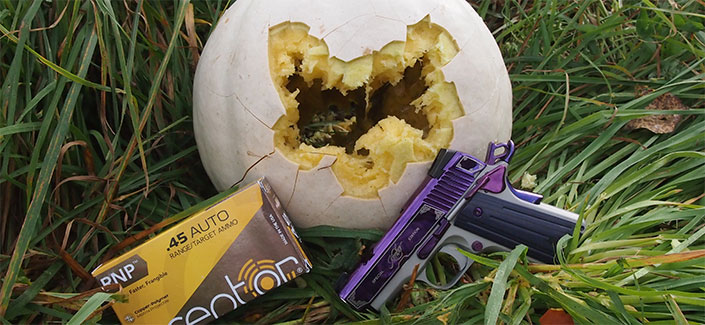
PolyCase manufacturers ammunition for Alexander Arms’ .50 Beowulf rifle. The rifle is a modified AR-15 platform using a .500-inch projectile. Felt recoil from this gun is manageable, but stout. I unleashed the .50 Beowulf on the Donkey Gong, starting at 10 yards and moving closer until I was a mere 5 feet from the AR500-steel target. There was an audible thump as the copper-polymer bullets made contact, but the only visible damage to the steel was the disappearance of the orange Target Spot sticker. I was unscathed and smiling.
Accuracy
Some shooters believe lightweight projectiles cannot be accurate. I put .380 ACP and .45 ACP through a Kimber Micro Carry and Kimber Custom II Two-Tone, respectively; 9 mm through a SIG Sauer P320; and 10 mm through an STI Tactical 5.0. The same guns were used for all brands. Every caliber performed as accurately or better than their non-frangible counterparts at distances from 7 to 25 yards.
There is a difference between accuracy and precision, though. Accuracy means you hit your target; precision is a tight group precisely where you want it. All three brands provided both, as can be seen in the accompanying table below.
Multiple guns were used to test cycling. SRSP TNQ stood out for cycling reliably, although few failures to feed were seen with any of the tested loads. As with any gun-and-ammunition combination, keeping the firearm clean and lubricated is important for reliability.
Bottom Line
Contrary to common industry belief, frangibles aren’t only for steel plates. Yes, their obvious use is for close-quarters training, but they’re undeniably solid choices for hunting and self-defense. Penetration depth and permanent wound cavities prove they’re capable of dropping an assailant; shattered bones and devastated internals on game animals—from rifles and handguns—demonstrate they’ll do it hard and fast.
Lighter-weight projectiles drift and drop differently than heavier projectiles, but you simply practice as with any ammunition to determine the proper point of aim.
And while close-range shooting is fun—slinging SRSP TNQ .50 BMG into paper from 75 yards is indescribably awesome—it still requires eye and ear protection. Don’t get cocky just because your bullets disintegrate on impact.
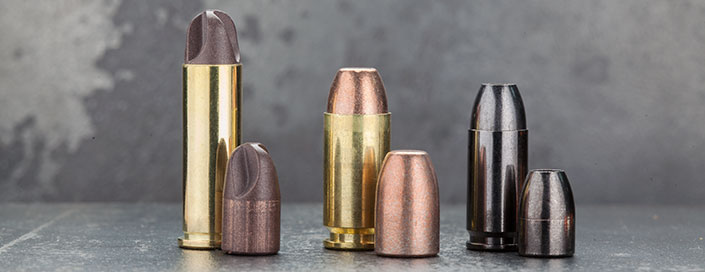
SRSP TNQ, DRT and PolyCase each manufacture quality frangible bullets. Each offers a unique trait—no jacket, jacketed and polymer—and you may discover a preference for one over another.
If you haven’t tried frangibles, you should. My daily carry pistol is loaded with them and they get it done hunting with both rifles and handguns. No ricochet, no backsplash, no over-penetration—what’s not to love? Make no mistake: Frangibles aren’t the ammunition of the future; they’ve become the optimal do-it-all choice of today.
